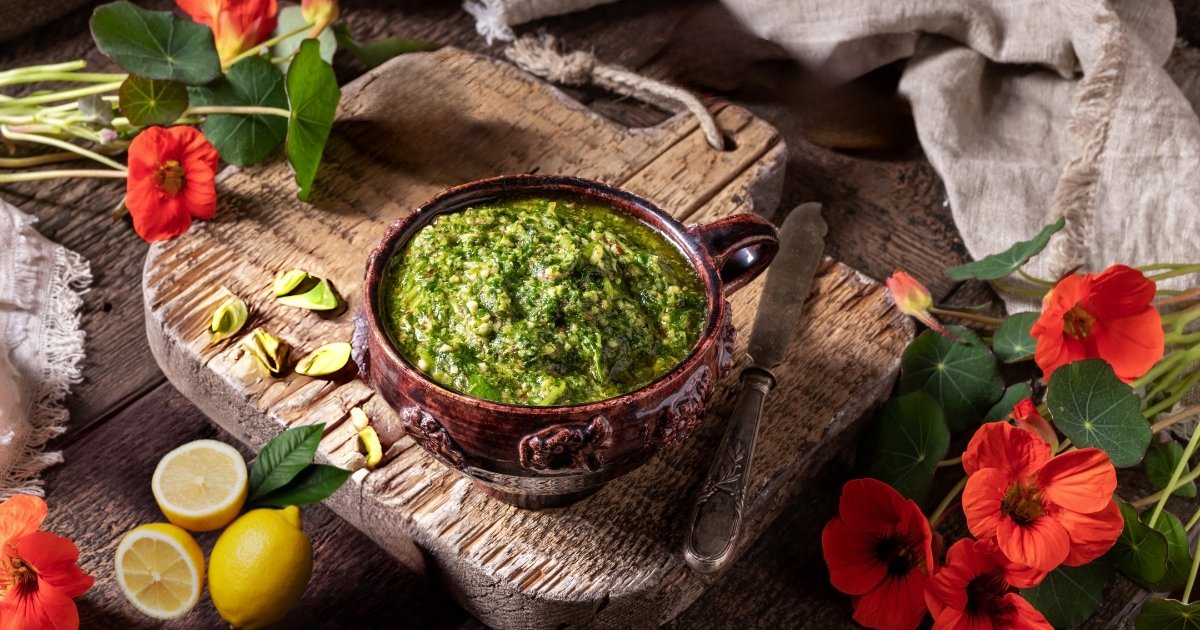Nasturtium leaf pesto recipe
We’re on a mission to use as much produce as we grow. We all know about nasturtiums, and they’re pretty easy to grow. But did you know the whole plant is edible? With that in mind, we’ve created a short series of recipe blogs highlighting a different part of the nasturtium. Next in my series of nasturtium recipes is Nasturtium Leaf Pesto.
Ingredients
50 large nasturtium leaves or twice as many if small
¼ cup pistachios or favourite nut
½ cup olive oil
½ cup Parmesan cheese
1 lemon zested
1 pinch smoked paprika optional
salt and pepper to taste
Instructions
Wash the nasturtium leaves and shake them dry
Toast the nuts (it intensifies their flavour) - put them in a dry pan over medium heat, giving them a shake every 30 seconds or so. Cook for 2-3 minutes - until they start to release their scent and go golden. Take them off the heat, or they will burn (fast!)
Fill your food processor up ¾ of the way, loosely, with leaves. Blend until they are chopped. Add more leaves, blend. Continue this until all of the leaves are blended up.
Add in the pistachios and blend until finely chopped.
Add in the cheese, lemon zest, smoked paprika and half the oil. Blend.
Add more oil until it's the desired consistency. This will highly depend on how much nasturtium you used.
Taste. Add salt, black pepper, more nuts or more cheese to taste.
Recipe notes & tips
Nuts: use any nut you like or have lying around.
Working with nasturtium: all parts of the plant are edible. While the flavour is pretty similar, there are slight differences.
Using stems: nasturtium stems work great in this pesto. But you might want to roughly chop them up so long stems don't get tangled in the food processor
Free form pesto: pesto is really one of those things you taste as you go. Then adjust, adding more of whatever you think is missing. You can't go wrong when you just follow your instincts. Vegan parmesan and pine nuts work just as well.
Early vs late-season leaves - In spring, the leaves are smaller, more tender, and mild. If the leaves taste too strong or are too tough later in the season, you could try blanching them first.

